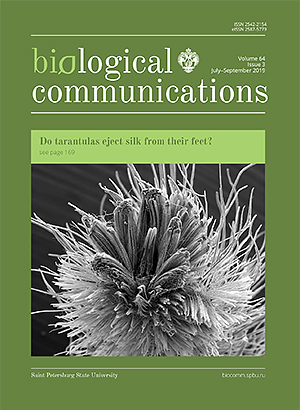Algae of terrestrial biotopes near the Russian Antarctic scientific station Bellingshausen, King George Island
DOI:
https://doi.org/10.21638/spbu03.2019.303Abstract
The biodiversity of algae of anthropogenically and technogenically disturbed terrestrial biotopes at the Bellingshausen Station of King George Island has been revealed. Fifty-three species of algae from five divisions were detected. Representatives of the cyanobacteria division dominated in the biotope studied. Almost all species belong to benthic forms, which corresponds well with the nature and origin of the biotopes. Differences in the composition of algocoenoses which developed on ornithogenic, mineral or anthropogenically polluted substrates were noted and characterized. The features of participation of different morphological types of algae in the process of organic mat formation have been emphasized. The biotopes of polar station surroundings were characterized by the dominance of cyanobacteria. Endemic species were not found.
Keywords:
Antarctica, King George Island, algae, terrestrial biotopes, algal flora, biodiversity
Downloads
References
Downloads
Published
How to Cite
Issue
Section
License
Articles of Biological Communications are open access distributed under the terms of the License Agreement with Saint Petersburg State University, which permits to the authors unrestricted distribution and self-archiving free of charge.





